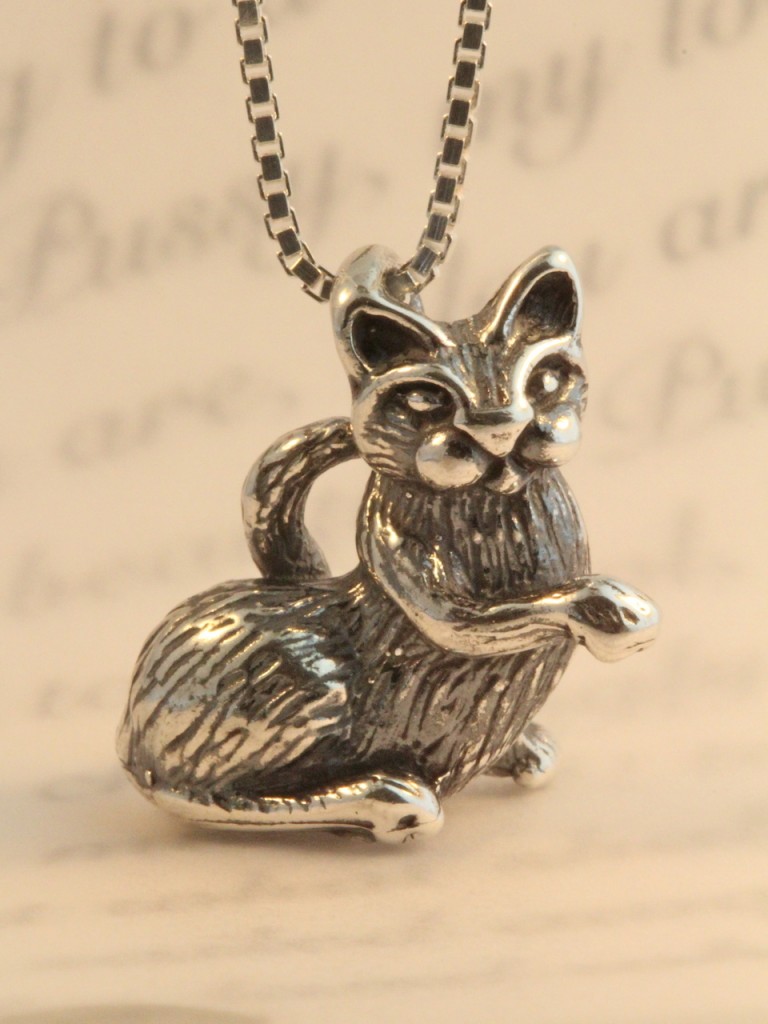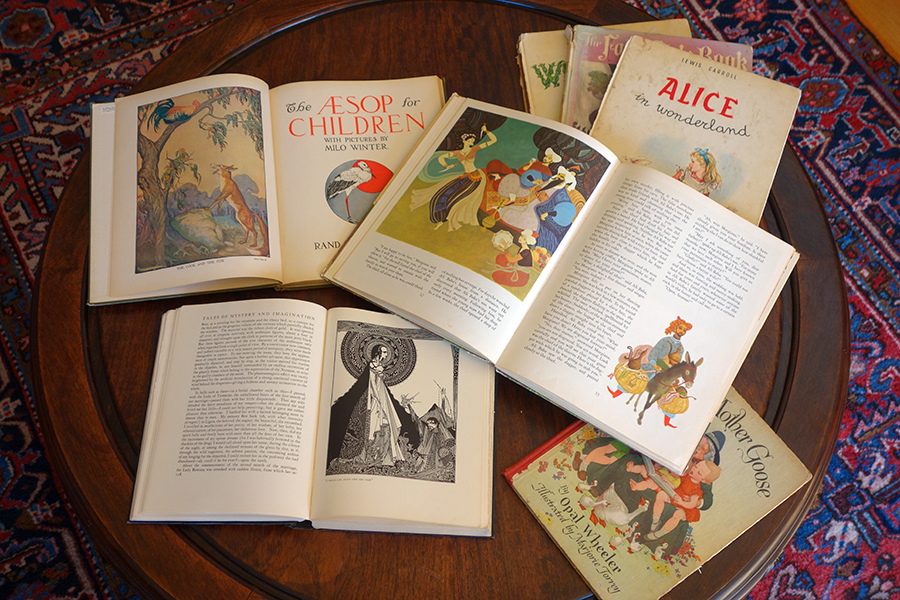
Selected titles from Marty’s collection of classic storybooks
This month we’re celebrating our Storybook Collection. In light of this, we’d like to share some interesting stories about the stories, including a comparison of famous story books vs. their movie counterparts, and the account of how Marty once ran (innocently) afoul of Google’s profanity filter.
Classical children’s stories were a significant influence in the jewelry Marty creates. As a child, her parents read to her from Alice in Wonderland, Winnie the Pooh, Mother Goose and Arabian Nights….just to name a few. As Marty grew older, she became a voracious reader. She devoured Edgar Allen Poe’s Tales of Mystery and Imagination, Jules Verne’s Fantastic Voyages, and adventured with Rudyard Kipling and Mowgli of The Jungle Book. Her imagination was fueled at an early age.
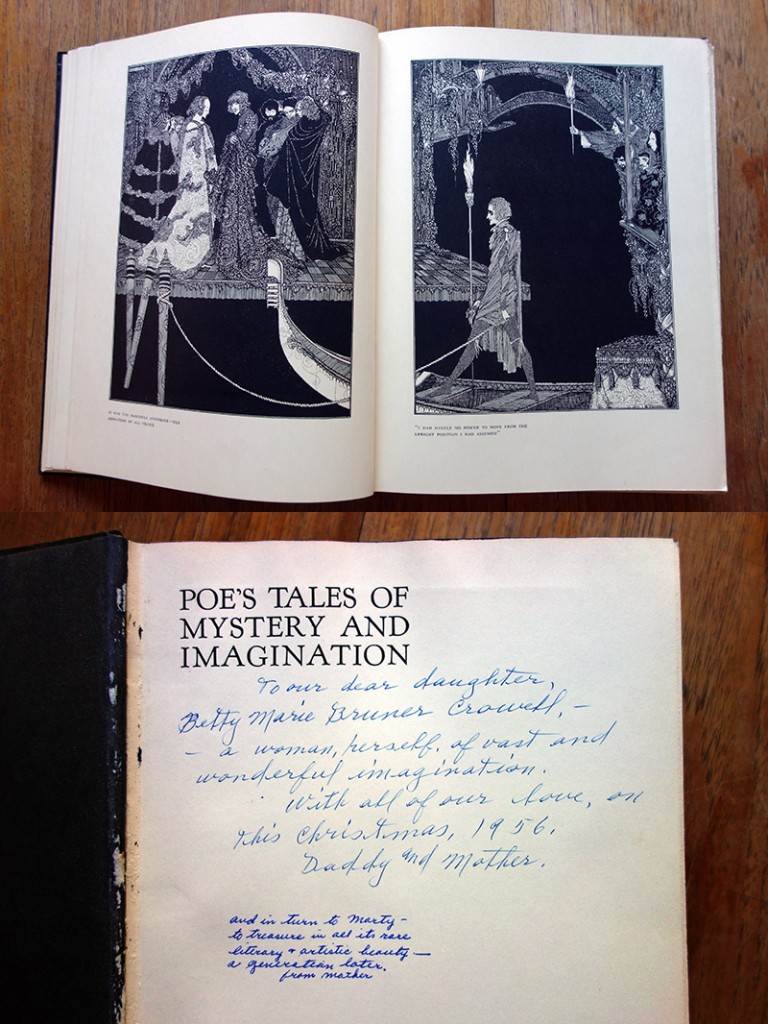
Tales of Mystery and Imagination by Edgar Allen Poe, with illustratrations by Harry Clarke. A gift to Marty’s mother by her parents, which was in turn passed down to Marty by her mother. An inscribed family heirloom.
Marty’s formative years were before the advent of the Disney blockbusters, and as such, the original books were her first exposure to these stories. Today, many of her customers know of these stories only through the Disney films, which can be altogether quite different from the original works. In Disney’s Peter Pan, for example, Peter and the Lost Boys are portrayed as a band of close-knit friends who share an eternal childhood together in Neverland. Their relationship is jovial, and their perpetual youth is part of Disney’s spin. As Buzzfeed notes, however, the Lost Boys in J.M. Barrie’s Peter Pan did grow up — at least, until they became too old and Peter seemingly killed them off:
“The boys on the island vary, of course, in numbers, according as they get killed and so on; and when they seem to be growing up, which is against the rules, Peter thins them out.”
– Peter Pan by J.M. Barrie
In a similar vein, One Thousand and One Nights, more commonly known as Arabian Nights is a compilation of ancient Arabic, Persian, Indian, Egyptian and middle Eastern folklore and poetry. The frame or thread of this vast collection of tales is that they are presumably told by the Sultan’s concubine, Scheherazade, who spun cliffhanger tales each night in order to delay her impending execution.
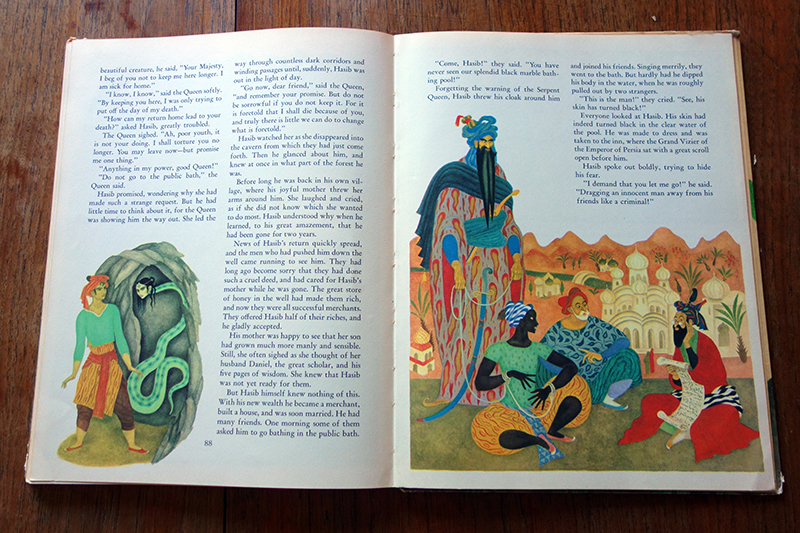
Excerpt from Marty’s illustrated copy of Arabian Nights
On a different note, Lewis Carroll’s Alice in Wonderland is perhaps somewhat more ‘wholesome’ than the film, which has become a touchstone for aficionados of psychedelic drugs. In this case the original was written long before the heyday of “shrooms” and LSD, and, as the BBC points out, the Caterpillar’s hookah really was filled with tobacco, after all. The internet is rife with misinterpretations of classic stories like this, and, as Marty learned, it isn’t just conspiracy theorists making revisions…
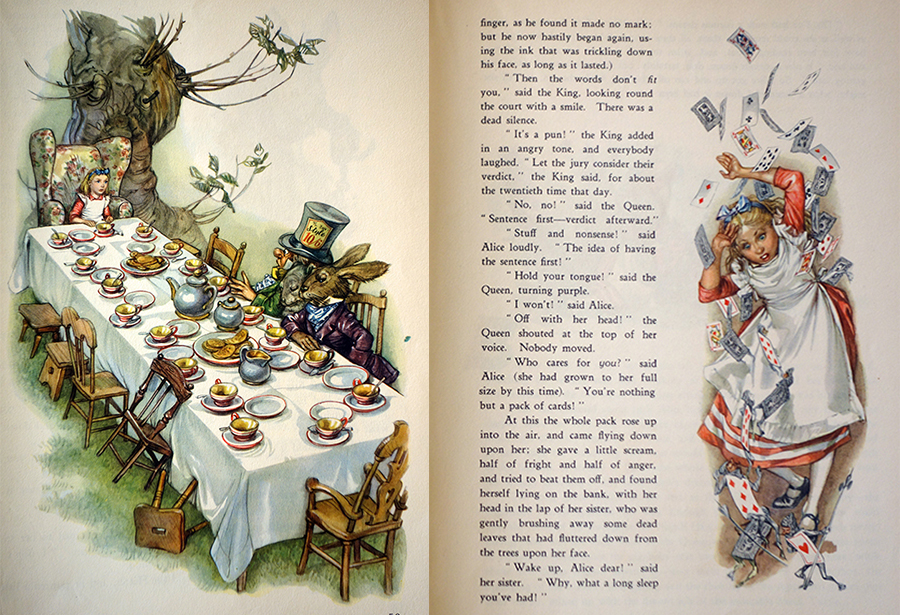
Excerpt from Marty’s copy of “Alice in Wonderland’
About 10 years ago, Marty’s web site orders slowed to a trickle. Art, who worked for Microsoft at the time, spent several agonizing weeks trying to figure out the problem and to reinstate Marty’s page standing on Google. The revelation came when he realized that Marty’s images were being blocked on computers with “Safe Search Settings.” They began coming up with theories to try to explain the mass disappearance, and surmised that Google’s profanity/adult content filter was involved. Was Google mistaking all of the photos of ears for a different piece of anatomy? Were Marty’s “Lovers” rings the offending product? Marty’s lover designs were tastefully entwined and certainly no more risqué than Michelangelo’s David.
Finally, after combing the site page by page, Art surmised that the offending content was most likely a poem by Edward Lear that Marty had used as part of her description for her “Owl and Pussy-Cat Earrings.” Edward Lear’s innocent poem, with its repetitive cadence in reference to the Cat, was the culprit. Clearly in 1871, words had different connotations. How to label the jewelry, then, if the original name is suspect? After some debate Marty and Art decided on the phrase “P-Cat,” which they now use in reference to the Owl and the P-Cat throughout the site.
It took many months for Marty to regain her status on Google and as a future precaution, Art launched a separate web site for Marty’s lovers design. https://www.martymagicbadgirl.com.

